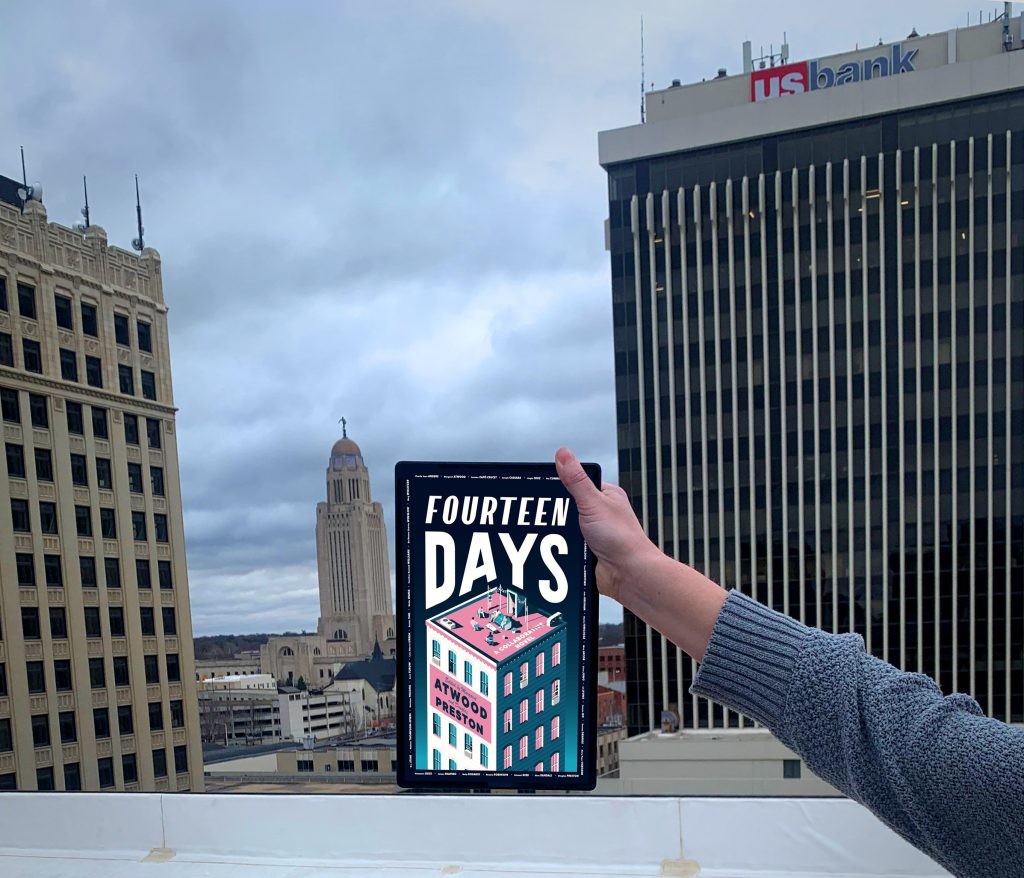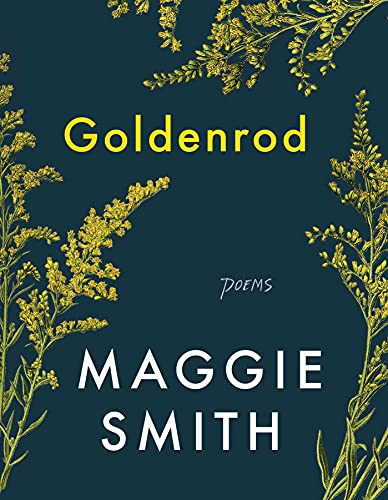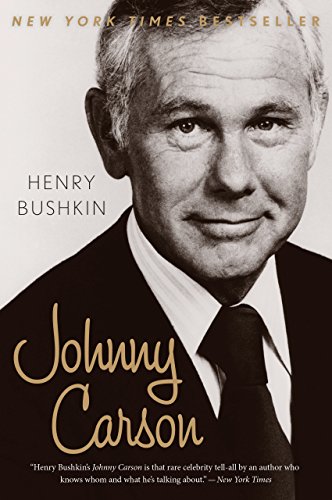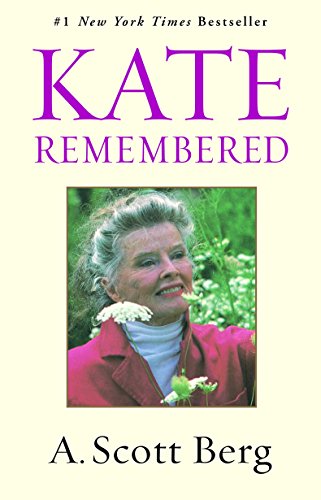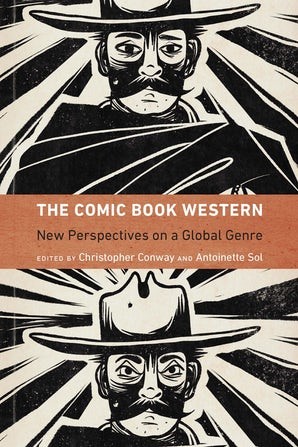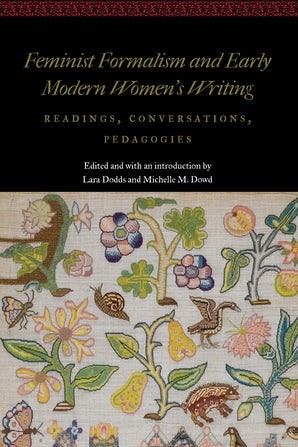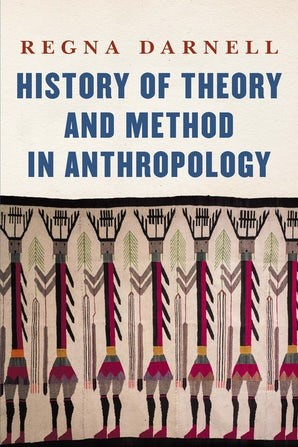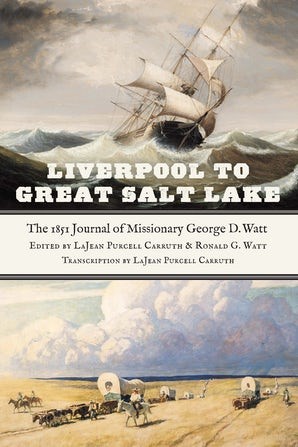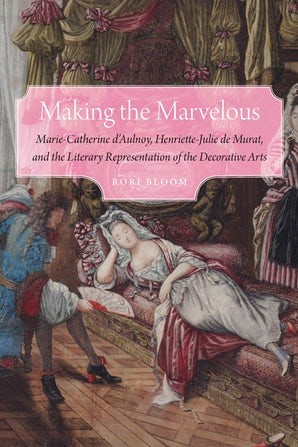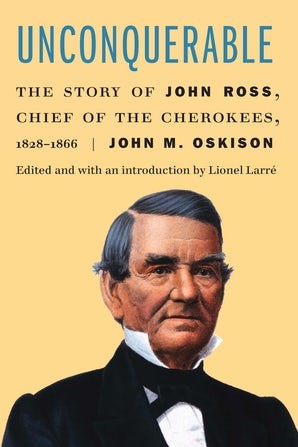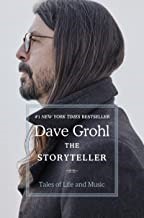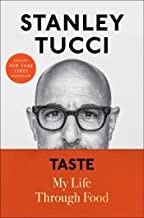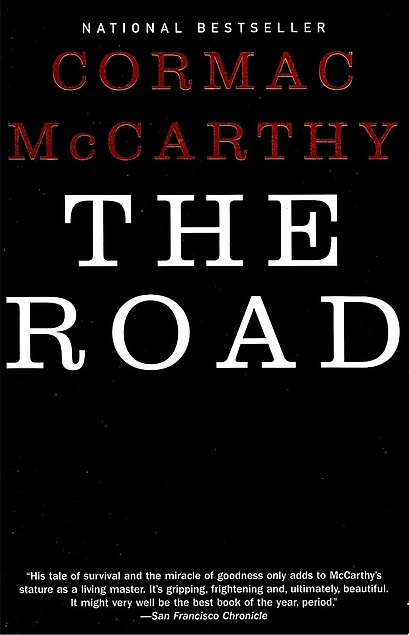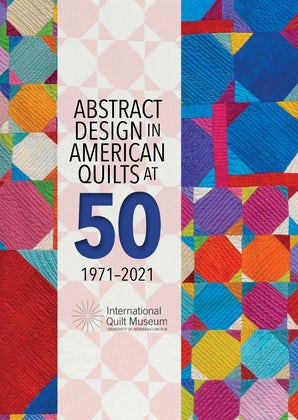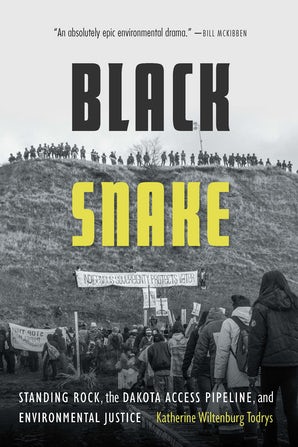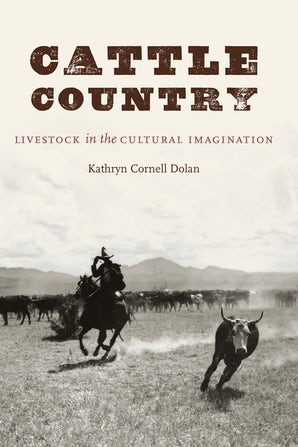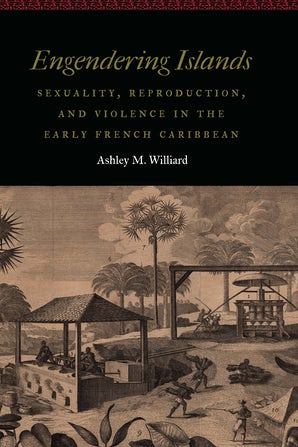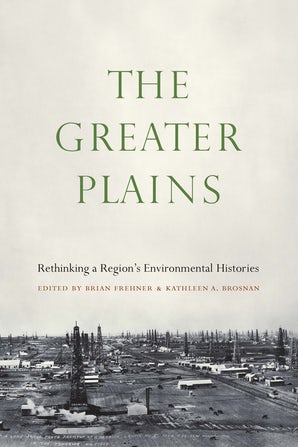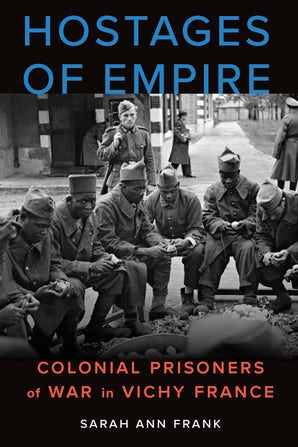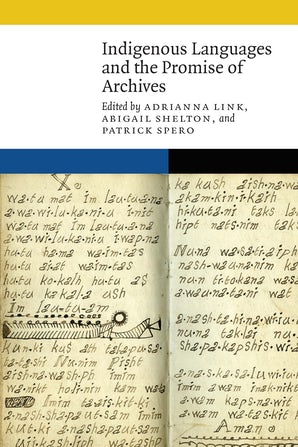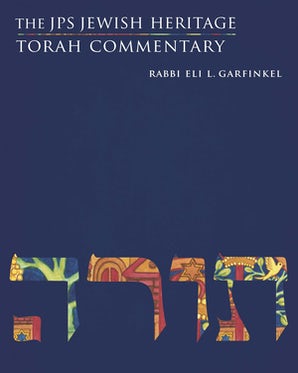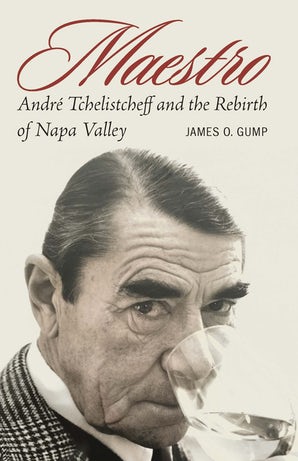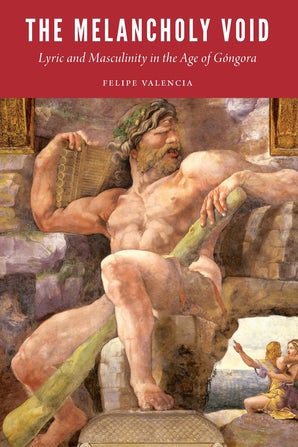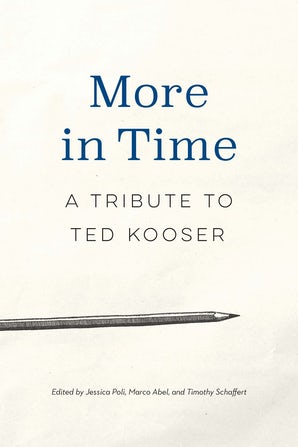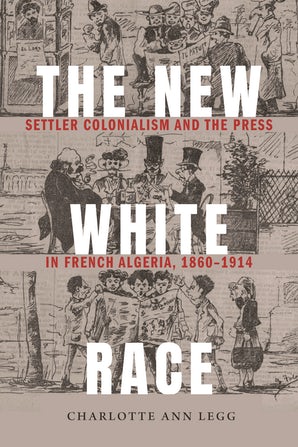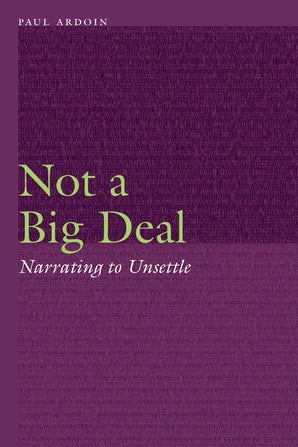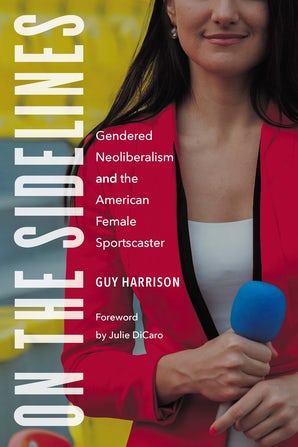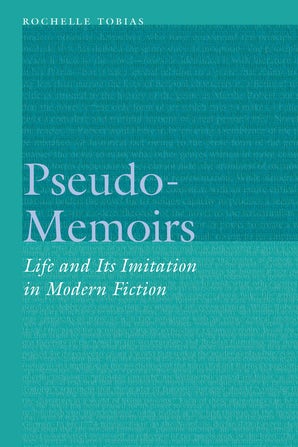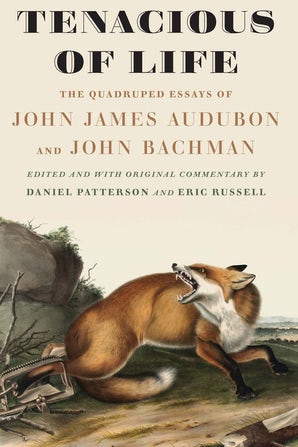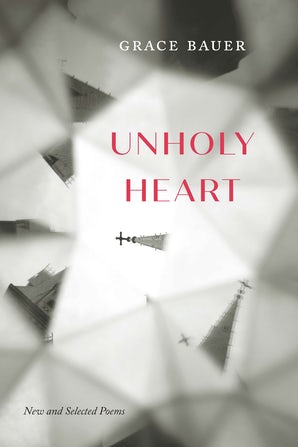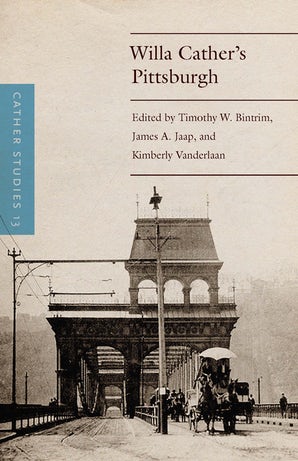Search the Blog
Categories
- Books & Reading
- Broadband Buzz
- Census
- Education & Training
- General
- Grants
- Information Resources
- Library Management
- Nebraska Center for the Book
- Nebraska Memories
- Now hiring @ your library
- Preservation
- Pretty Sweet Tech
- Programming
- Public Library Boards of Trustees
- Public Relations
- Talking Book & Braille Service (TBBS)
- Technology
- Uncategorized
- What's Up Doc / Govdocs
- Youth Services
Archives
Subscribe
Search Results for: reading with mary
What Sally’s Reading

Win a chance to have Sharon Flake visit your school!
I heard about this opportunity on the YALSA-BK mail list. The contest is open from June 1, 2010 – August 13, 2010. First, interested students should read any or all of Sharon Flake’s books. Then they need to write a 500 word essay about how one of Flake’s novels, short stories, or poems has affected his or her life or changed the way he or she looks at their community. This reading contest is open to students in grades 5 – 12 who live in the lower 48 states. All essays are due by Friday, August 13, 2010. Email essays to flake.sharon@gmail.com. The winner will be announced on Tuesday, September 7, 2010. For details, check out the contest page: http://www.sharongflake.com/4u/contests/ It would be great if a student in Nebraska won!
I am in the first third of The Dead-Tossed Waves by Carrie Ryan. Gabrielle (Gabry) lives in Vista with her mother, Mary (from The Forest of Hands and Teeth). Gabry is frightened of the world outside the village’s walls, but one night her friends talk her into climbing the wall and exploring with them, with horrible consequences. As a result of this terrible event, Gabry and her mother talk; Gabry is shocked to hear her mother’s whole story, and chides her for not trying harder to find and rescue her friends after she was safe. Mary leaves the next day to do just that. Now Gabry must decide what she will do.
(The Nebraska Library Commission receives free copies of children’s and young adult books for review from a number of publishers. After review, the books are distributed free to Nebraska school and public libraries.)
Posted in Books & Reading, General, Youth Services
Leave a comment
2010 One Book One Nebraska: Are you reading The Home Place?
One Book One Nebraska 2010 invites citizens across the state to read The Home Place, by Wright Morris, a native of Central City, Nebraska. This “photo-text” is an account in first-person narrative and photographs of the one-day visit of Clyde Muncy to “the home place” at Lone Tree, Nebraska.
We know that library involvement is the key to success of our Nebraska statewide reading efforts. We also know that the staff and volunteers of Nebraska public libraries are very busy with a variety of library services and reading promotion activities. We continue to request your input into the resources and tools that can help libraries bring communities together through literature by hosting reading and discussion activities.
Is your library interested in celebrating One Book One Nebraska 2010 by reading The Home Place by Wright Morris? Please take a look and the Website, http://centerforthebook.nebraska.gov/onebook/2010/and comment below with suggestions and ideas for tools that might help you with reading/discussion activities and other events.
Thanks, Mary Jo Ryan
Posted in Books & Reading, General, Public Relations
3 Comments
Are you reading Crazy Horse: Strange Man of the Oglalas at your library?
Readers across the state are celebrating One Book One Nebraska by reading Crazy Horse: Strange Man of the Oglalas, by Nebraska author Marie Sandoz and by participating in local discussions throughout the year. Nebraska libraries are invited to join in the fun by organizing book discussion sessions and other events.
To help you get started, see http://www.onebookonenebraska.org/2017/index.aspx for discussion questions, program ideas, and a calendar of events.
Book Club Kits, nlc.nebraska.gov/ref/bookclub/, are available from the Nebraska Library Commission and the Nebraska Regional Library Systems.
2007 One Book One Nebraska is coordinated by Mari Sandoz High Plains Heritage Center at Chadron State College and cosponsored by Nebraska Center for the Book, Nebraska Library Association, Nebraska Library Commission, Nebraska Regional Library Systems, and other organizations.
Please comment on this posting with your ideas for programming, reactions to the book, etc.
Thanks, Mary Jo Ryan
Posted in Books & Reading
Leave a comment
Book Club Spotlight – Rising Voices
With Thanksgiving finally here, I was pulled toward a recent donation in our collection that I found to be a fantastic and thought-provoking read for closing out Native American Heritage Month. Curated by Arlene Hirschfelder and Beverly R. Singer, Rising Voices: Writings of Young Native Americans is a collection of essays, poems, and stories from the late 1880s to the early 1990s. Hirschfelder speaks of the young authors featured in the collection: “their words bear vivid, often eloquent witness to the realities of their lives over the past hundred years. They have much to tell us”.
Separated into the categories of Identity, Family, Homelands, Ritual and Ceremony, Education, and Harsh Realities. Each section includes writings that exemplify a part of the youth’s life. From gorgeous descriptions of mesas to warm and comforting home lives, there is also the truth of the hardships and poverty Native Americans were forced into, and many still live in today. The young writers’ strong sense of awareness and personal values ring throughout the collection, especially as we move into modern times.
The Bighorn River flows
The Bighorn River – Len Plenty, 1988
through the reservation.
As it goes, it meets the
Little Bighorn. They are like
a big brother and a little
brother together.
The sound of it makes
the reservation special.
It seems as if it protects
the reservation with happiness
And care. The reservation
knows it has a close friend
and that’s the river.
The river wants to flow
to all the four winds but
knows it can just flow one way
with the same wind.
Rising Voices is a beautiful and unique collection that spans multiple viewpoints and lives of young Native Americans throughout the last century. Readers are treated to breathtaking poetry and heart-wrenching essays that stick with you long after. This collection includes work from elementary schoolers to graduating seniors, making this the perfect selection for any aged Book Club Group. There is a wealth of continued reading and discussions to be had, especially on the different backgrounds and viewpoints of each author. Some have a deep sense of self and justice, while others bask in the love from their families. My favorite reading, If I Were a Pony, is a collaborative poem by Navajo children where the speaker wishes they were a pinto pony so they could run away to live a carefree life out on the mesa. It is a good exercise to delve into what the author’s were feeling, and what purpose does each excerpt serve in this wider narrative created by Hirschfelder and Singer.
For a further example of discussion topics, one particular section that stood out to me was Education—pieces included covered topics from US Indian Boarding Schools that worked to assimilate Native American youth from their culture to more modern school efforts to reintroduce students to what has been lost.
Carlisle Indian School, whose mission was to “Kill the Indian, save the Man,” often published propagandist essays and stories from their students as a way to fundraise and maintain a good social image. One essay titled Opportunity, written by Alvis M. Morrin in 1914, extols the virtue of the off-reservation school. He speaks on famous Native Americans, such as former Vice President Charles Curtis, and shows his reverence towards the perceived landscape of progress while still maintaining his heritage:
“Our lot is easier than theirs [our forefathers], for race prejudice has been overcome, and a beneficent Government is giving the Indian youth the opportunities which once belonged only to the white man. Open doors to any vocation are waiting for the Indian to enter.”
In stark contrast, a more modern excerpt included from 1996 when Holy Rosary High School in South Dakota introduced a new course called Modern Indian Psychology in an effort to teach their young Lakota students the importance of their history and the cultural values of their people. In Something Really Different, students reported feeling a sense of belonging and pride they had never had before, highlighting the importance that young Native Americans continue to learn about their history.
“Before this course, we didn’t even know that Indians were important or that it was important for us to know Indian history and values.” – Patrick Kills Crow and Mary Crazy Thunder
“Now I am glad I am an Indian. Before I was ashamed of it.” – Francis Clifford
How are these student’s voices being used? And are they being promoted for their benefit or someone else’s? And what purpose do they serve in the anthology?
If you’re interested in requesting Rising Voices for your book club, you can find the Request Form here. There are 7 copies available. (A librarian must request items)
To see more of our Native American Voices book club titles, visit the link here.
Hirschfelder, Arlene & Singer, Beverly. Rising Voices. HarperPerennial. 1996.
Posted in Books & Reading
Tagged book club spotlight, books, Native American Literature, Reading
Leave a comment
Friday Reads: Goldenrod by Maggie Smith
I am going to come out and say it: when our license plates were the meadowlark and the goldenrod, I loved them. I thought they were beautiful. Goldenrod may look like the allergy sufferer’s nemesis, ragweed, but is it innocent, blameless, unfairly maligned! A lovely, important part of our ecosystem, and a worthy state flower.
That was not why I chose to read Maggie Smith’s 2021 poetry collection, Goldenrod, but it was a point in her favor. One of my favorite poems is actually Smith’s “Good Bones.” My copy of Goldenrod was gifted to me from a friend and former mentor; it is possible that I have shared “Good Bones” to my social media so often that I have become associated with Maggie Smith (high praise).
Goldenrod is composed of three sections of poetry, the themes of which are: birth, death, nature, motherhood, and life. There’s a sprinkling of an homage to Mary Oliver — just a hint, just a flavor; to me, no one can hold a candle to Mary. But Mary was just one part of the conversation, and there must be other voices now.
A couple of poems that stood out after my reading were: “For My Next Trick” and “Wild.”
“For My Next Trick” centers around a conversation between the narrator — a mother — and her daughter, who asks
“Where was I …
before I was in your body?
–What was I?”
It’s a conversation about where we (might) come from, and what (might) happen after we die, and the connection between death and life, and what (might) go on after us. The (maybe) answer comes in the last stanzas of the poem-conversation:
I tell her the stars
are the exception–
burned out but still lit.
No, not ghosts,not exactly. Nothing
to be scared of.
That final sentence “Nothing to be scared of” is so poignant in its simplicity, the tone perfectly set for talking to a child — and as a result, it is comforting regardless of age.
“Wild” really called to mind the Mary Oliver homage for me; there is so much to loving the world, and struggling to love it, and just existing despite the brutality of man and nature. “Wild” also feels like a worthy companion to “Good Bones.”
I’ve talked so much about loving the world
without any idea how to do it.
…
The world I’m trying to love
is all teeth and need, all gray mange
All poetry is conversation, and I hear these lines as speaking towards “At the River Clarion“, specifically one of my favorite lines, which itself spins back to Tennyson, and nature, red in tooth and claw (In Memoriam A. H. H.):
If God exists he isn’t just butter and good luck.
He’s also the tick that killed my wonderful dog Luke.
Said the river: imagine everything you can imagine, then keep on going.
Overall, a delightful and meditative collection of poetry that can be read in an afternoon — but probably should be read slowly, and savored like a good cup of tea.
Maggie Smith is the author of several other poetry collections, as well as her 2023 memoir, You Could Make this Place Beautiful.
Smith, Maggie. Goldenrod: Poems. One Signal Publishers/Atria, 2021.
Navigating NebraskAccess: MAS Complete

This past summer the Nebraska Library Commission added two new EBSCO K12 databases to its NebraskAccess lineup—MAS Complete and Middle Search Plus. In this post I’d like to introduce you to MAS Complete.
MAS Complete is a research database designed specifically for high school libraries. It provides searchable access to full text articles from 540 periodicals, plus indexing and abstracts of articles from an additional 160 titles. It also boasts 55,000 full-text primary source documents and 75,000 videos from the Associated Press.
When selecting material to include in school databases like MAS Complete, EBSCO’s first priority is making sure it is “educational, age-appropriate (in reading level and context), support[s] curriculum requirements, and [is] applicable to the subjects taught at specific grade levels.” EBSCO takes a multi-pronged approach to this task, consulting publication subscription information, title level reviews, and Lexile® measurements of text, in addition to discussing content needs with both teaching professionals and customers and having staff review each publication. Finally, EBSCO employs both human curation and technology to further fine-tune inclusion decisions.
Because high school students possess a diverse range of academic and developmental needs and abilities, you will find a correspondingly diverse range of materials in MAS Complete. Periodical coverage includes everything from general interest news and entertainment magazines, like TIME, Newsweek, Rolling Stone, and Sports Illustrated, to discipline-specific publications aimed at interested non-professionals, like History Today and Scientific American. Peer-reviewed scholarly journals are included to meet the needs of high ability learners and college-bound upperclassmen, but there is also enough title overlap with Middle Search Plus that students reading below grade level should be able to find accessible content, too.
When using MAS Complete, librarians, teachers, and students will find an array of tools at their fingertips to help focus their searches on just the content that matters to them. Limit options, which can be applied before or after a search, include Full Text, Peer Reviewed, Publication, Publication Date, Source Type, Cover Story, and Lexile® Reading Level. Wielded creatively, they can empower searchers to retrieve vastly different result lists in response to identical initial searches.
MAS Complete is available to search as a stand-alone database using the EBSCOhost interface. It is also one of several databases that can be searched or browsed simultaneously through Explora for High Schools. MAS Complete and Explora for High Schools are available through both the NebraskAccess High School Databases page and the All NebraskAccess Databases page.
Posted in Education & Training, Information Resources
Tagged Databases, EBSCO, MAS Complete, nebraskaccess
Leave a comment
Friday Reads: Johnny Carson and Kate Remembered
When I shelved books at Beatrice Public Library, we had a separate room for biographies and all of our comfortable chairs were located there. I always wondered about the patrons that found the lives of others so fascinating, and now, I realize that person is me. Is it just one-step away from reading People magazine at your dentist office or is it something more? Since I have started reading biographies, they have become one of my favorite genres. Here are two biographies I read this summer:
Johnny Carson by Henry Bushkin
I grew up with Johnny Carson reliably making us laugh at the end of the day until his last broadcast in May of 1992 when Bette Midler serenaded him with One More For My Baby. The author is described as Johnny’s “personal legal adviser, fixer, confidant, and close friend.” Carson referred to Bushkin as his best friend. The book covers their 18-year relationship, which began when the author was 27 years old in 1970. Had the relationship not ended abruptly or acrimoniously, I wonder if Bushkin would have written this book? The author reveals Johnny’s copious generosity, his inability to be a good husband or money manager, and the psychological damage inflicted on him by his mother from which he never recovered. His mercurial temperament and his grudges were legend. This book pulled back the curtain on an icon that I would have rather left alone but through the eyes of Bushkin, I felt I got closer to the truth or at least one version of it. Despite it all, nobody hosted a show quite like Johnny and watching old clips of him still brings a smile to my face.
Kate Remembered by A. Scott Berg
I listened to Kate Remembered shortly after it was published in 2003. After I gave copies to my neighbor Mary and to my friend Vern, I thought it was time to have another listen. Incidentally, the book is narrated by the actor Tony Goldwyn who does a fair Hepburn impression. The book focuses on Berg’s friendship with Hepburn that started in 1983 and lasted until her death. Berg was Kate’s chronicler as she lavished stories upon him from her life and some episodes that I suspect she rarely shared. From the author’s book cover, “… Miss Hepburn often used our time together to reflect, an exercise in which I don’t think she indulged with anybody else.” I found Scott’s speculative answer to Kate’s question on why he thought Tracy drank so much fascinating and likely spot on. Learning about Kate through Scott’s writing, and what I hope were direct quotes of Hepburn’s, was worth a first and a second visit. After I finished, I re watched The Philadelphia Story and Guess Who’s Coming to Dinner again. Time well spent.
So what is the appeal of biographies? Because there is always more to someone’s life is than meets the eye. Triumphs and tragedies are a human condition no matter your fame or infamy. We are all broken.
Bushkin, Henry. Johnny Carson. Boston, MA; Houghton Mifflin Harcourt, 2013.
Berg, A. Scott. Kate Remembered. New York, NY. Putnam Adult, 2003.
Book Briefs: New University of Nebraska Press Books at the Nebraska Publications Clearinghouse
The Nebraska Publications Clearinghouse receives documents every month from all Nebraska state agencies, including the University of Nebraska Press (UNP). Each month we will be showcasing the UNP books that the Clearinghouse has received.
UNP books, as well as all Nebraska state documents, are available for checkout by libraries and librarians for their patrons.
Here are the UNP books the Clearinghouse received in April 2022:
The Comic Book Western : New Perspectives on a Global Genre, Edited by Christopher Conway and Antoinette Sol ; Series: Postwestern Horizons
One of the greatest untold stories about the globalization of the Western is the key role of comics. Few American cultural exports have been as successful globally as the Western, a phenomenon commonly attributed to the widespread circulation of fiction, film, and television. The Comic Book Western centers comics in the Western’s international success. Even as readers consumed translations of American comic book Westerns, they fell in love with local ones that became national or international sensations.
These essays reveal the unexpected cross-pollinations that allowed the Western to emerge from and speak to a wide range of historical and cultural contexts, including Spanish and Italian fascism, Polish historical memory, the ideology of shōjo manga from Japan, British post-apocalypticism and the gothic, race and identity in Canada, Mexican gender politics, French critiques of manifest destiny, and gaucho nationalism in Argentina. The vibrant themes uncovered in The Comic Book Western teach us that international comic book Westerns are not hollow imitations but complex and aesthetically powerful statements about identity, culture, and politics.
Feminist Formalism and Early Modern Women’s Writing. Edited and with an introduction by Lara Dodds and Michelle M. Dowd ; Series: Women and Gender in the Early Modern World
Feminist Formalism and Early Modern Women’s Writing reexamines the relationship between gender and form in early modern women’s writing in essays that elaborate the specific literary strategies of women writers, that examine women’s debts to and appropriations of different literary genres, and that offer practical suggestions for the teaching of women’s texts in several different contexts. Contributors explore the possibility of feminist formalism, a methodology that both attends to the structural, rhetorical, and other formal techniques of a given text and takes gender as a central category of analysis. This collection contends that feminist formalism is a useful tool for scholars of the early modern period and for literary studies more broadly because it marries the traditional questions of formalism—including questions of style, genre, and literary history—with the political and cultural concerns of feminist inquiry.
Contributors reposition works by important women writers—such as Margaret Cavendish, Hester Pulter, Mary Wroth, and Katherine Philips—as central to the development of English literary tradition. By examining a variety of texts written by women, including recipes, emblems, exchanges, and poetry, Feminist Formalism and Early Modern Women’s Writing contributes to existing scholarship on early modern women’s writing while extending it in new and important directions.
History of Theory and Method in Anthropology. By Regna Darnell ; Series: Critical Studies in the History of Anthropology
Regna Darnell offers a critical reexamination of the theoretical orientation of the Americanist tradition, centered on the work of Franz Boas, and the professionalization of anthropology as an academic discipline in the United States in the late nineteenth and early twentieth centuries. History of Theory and Method in Anthropology reveals the theory schools, institutions, and social networks of scholars and fieldworkers primarily interested in the ethnography of North American Indigenous peoples. Darnell’s fifty-year career entails foundational writings in the four fields of the discipline: cultural anthropology, ethnography, linguistics, and physical anthropology.
Leading researchers, theorists, and fieldwork subjects include Claude Lévi-Strauss, Franz Boas, Benjamin Lee Whorf, John Wesley Powell, Frederica de Laguna, Dell Hymes, George Stocking Jr., and Anthony F. C. Wallace, as well as nineteenth-century Native language classifications, ethnography, ethnohistory, social psychology, structuralism, rationalism, biologism, mentalism, race science, human nature and cultural relativism, ethnocentrism, standpoint-based epistemology, collaborative research, and applied anthropology. History of Theory and Method in Anthropology is an essential volume for scholars and undergraduate and graduate students to enter into the history of the inductive theory schools and methodologies of the Americanist tradition and its legacies.
Liverpool to Great Salt Lake : the 1851 Journal of Missionary George D. Watt. Edited by LaJean Purcell Carruth & Ronald G. Watt, Transcription by LaJean Purcell Carruth.
George Darling Watt was the first convert of the Church of Jesus Christ of Latter-day Saints baptized in the British Isles. He emigrated to Nauvoo, Illinois, in 1842. He returned to the British Isles in 1846 as a missionary, accompanied by his wife and young son. He remained there until 1851, when he led a group of emigrant converts to Salt Lake City, Utah. Watt recorded his journey from Liverpool to Chimney Rock in Pitman shorthand. Remarkably, his journal wasn’t discovered until 2001—and is transcribed and appearing for the first time in this book.
Watt’s journal provides an important glimpse into the transatlantic nature of Latter-day Saint migration to Salt Lake City. In 1850 there were more Latter-day Saints in England than in the United States, but by 1890 more than eighty-five thousand converts had crossed the Atlantic and made their way to Salt Lake City. Watt’s 1851 journal opens a window into those overseas, riverine, and overland journeys. His spirited accounts provide wide-ranging details about the births, marriages, deaths, Sunday sermons, interpersonal relations, weather, and food and water shortages of the journey, as well as the many logistical complexities.
Making the Marvelous : Marie-Catherine d’Aulnoy, Henriette-Julie Murat, and the Literary Representation of the Decorative Arts. By Rori Bloom ; Series: Early Modern Cultural Studies
At a moment when France was coming to new prominence in the production of furniture and fashion, the fairy tales of Marie-Catherine d’Aulnoy (1652–1705) and Henriette-Julie de Murat (1670–1716) gave pride of place to richly detailed descriptions of palaces, gardens, clothing, and toys. Through close readings of these authors’ descriptive prose, Rori Bloom shows how these practitioners of a supposedly minor genre made a major contribution as chroniclers and critics of the decorative arts in Old Regime France. Identifying these authors’ embrace of the pretty and the playful as a response to a frequent critique of fairy tales as childish and feminine, Making the Marvelous demonstrates their integration of artisan’s work, child’s play, and the lady’s toilette into a complex vision of creativity. D’Aulnoy and Murat changed the stakes of the fairy tale, Bloom argues: instead of inviting their readers to marvel at the magic that changes rags to riches, they enjoined them to acknowledge the skill that transforms raw materials into beautiful works of art.
Unconquerable : the Story of John Ross, Chief of the Cherokees, 1828-1866. Edited and with an introduction by Lionel Larre’.
Unconquerable is John Milton Oskison’s biography of John Ross, written in the 1930s but unpublished until now. John Ross was principal chief of the Cherokees from 1828 to his death in 1866. Through the story of John Ross, Oskison also tells the story of the Cherokee Nation through some of its most dramatic events in the nineteenth century: the nation’s difficult struggle against Georgia, its forced removal on the Trail of Tears, its internal factionalism, the Civil War, and the reconstruction of the nation in Indian Territory west of the Mississippi.
Ross remains one of the most celebrated Cherokee heroes: his story is an integral part not only of Cherokee history but also of the history of Indian Territory and of the United States. With a critical introduction by noted Oskison scholar Lionel Larré, Unconquerable sheds light on the critical work of an author who deserves more attention from both the public and scholars of Native American studies.
The Winning Ticket : Uncovering America’s Biggest Lottery Scam. By Rob Sand with Reid Forgrave.
The Winning Ticket is an inside look at one of the most complicated yet seat-of-your-pants financial investigations and prosecutions in recent history. Rob Sand, the youngest attorney in his office, was assigned a new case by his boss, who was days away from retirement. Inside the thin accordion binder Sand received was meager evidence that had been gathered over the course of two years by Iowa authorities regarding a suspicious lottery ticket. No one expected the case to go anywhere. No dead body, no shots fired, and no money paid out. Why should they care? There was no certainty that a crime had even been committed. But a mysterious Belizean trust had attempted to claim the $16 million ticket, then decided to forgo the money and maintain anonymity when the State of Iowa demanded to know who had purchased the ticket. Who values anonymity over that much money?
Both a story of small-town America and a true-crime saga about the largest lottery-rigging scheme in American history, The Winning Ticket follows the investigation all the way down the rabbit hole to uncover how Eddie Tipton was able to cheat the system to win jackpots over $16 million and go more than a decade without being caught—until Sand inherited the case.
Just as remarkable as the crime are the real-life characters met along the way: an honest fireworks salesman, a hoodwinked FBI agent, a crooked Texas lawman, a shady attorney representing a Belizean trust, and, yes, Bigfoot hunters. While some of the characters are nearly unbelievable, the everyday themes of integrity and hard work resonate throughout the saga. As the case builds toward a reckoning, The Winning Ticket demonstrates how a new day has dawned in prosecuting complex technological crimes.
**Synopses courtesy of University of Nebraska Press.
#BookFaceFriday “Portrait of an Unknown Lady” by María Gainza
This #BookFaceFriday is a work of art!
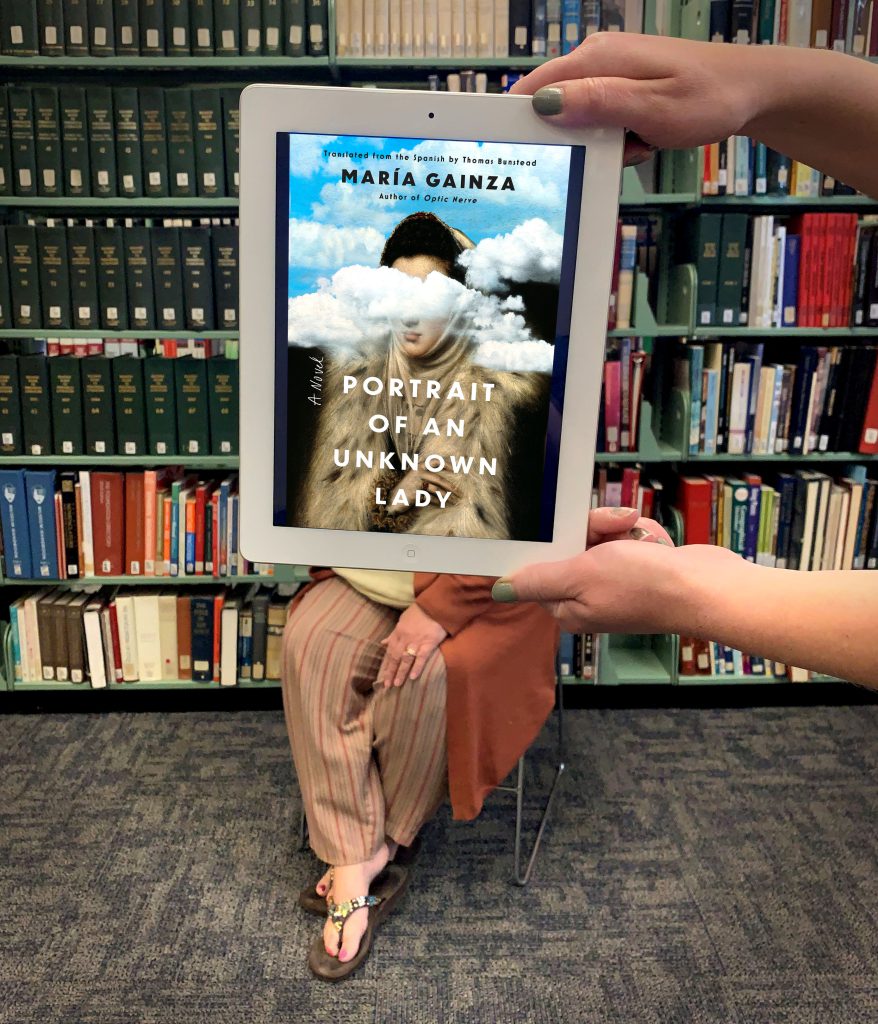
An air of mystery surrounds this week’s #BookFace. Dive into the world of counterfeit art and forgeries with “Portrait of an Unknown Lady: A Novel” by María Gainza, translated by Thomas Bunstead (Catapult, 2022.) It’s available as an eBook in Nebraska OverDrive Libraries; add it to your holds list today! One woman who is known by all of our book club kit users is this week’s model, Mary Geibel. She’s been staffing our front desk for years, but recently she’s taken a new position as our Library Development Office Specialist, helping our Library Development team with Accreditation and Certification, CE credits, grants, and more. If you get the chance, tell her congratulations!
“A mesmerizing deep dive into the art world through a neo-noir female detective’s quest to find a forger in Buenos Aires . . . Dreamy and atmospheric . . . Portrait of an Unknown Lady, eschewing structure and neat plot convention for vibrant language and a hypnotic voice, complicates rather than clarifies the stories that are told about enigmatic women.”
―Shelf Awareness (starred review)
Find this title and many more through Nebraska OverDrive! Libraries participating in the Nebraska OverDrive Libraries Group currently have access to a shared and growing collection of digital downloadable audiobooks and eBooks. 188 libraries across the state share the Nebraska OverDrive collection of 21,696 audiobooks, 35,200 eBooks, and 3,964 magazines. As an added bonus it includes 130 podcasts that are always available with simultaneous use (SU), as well as SU ebooks and audiobook titles that publishers have made available for a limited time. If you’re a part of it, let your users know about this great title, and if you’re not a member yet, find more information about participating in Nebraska Overdrive Libraries!
Love this #BookFace & reading? Check out our past #BookFaceFriday photos on the Nebraska Library Commission’s Facebook page!
Friday Reads: Celebrating Jolabokaflod
Jolabokaflod, or “Christmas Book Flood” in English, is the Icelandic tradition of giving books on Christmas Eve and reading into the night. Here are two books I am gifting my friends Vern and Jon for their Christmas Eve reading.
Vern was born the same day and year as Stanley Tucci and honestly, there are some passages in Taste that make me believe there could be something to birthday twins being similar. Vern’s husband Jon is a huge Foo Fighters fan, and all the press Dave Grohl’s book, The Storyteller, received made me curious to learn more about this musician’s life. I think it is helpful (mandatory?) to read a book before you gift it because giving books can be a burden to the recipient — if you don’t believe in the book, why should they? I’m pretty certain I have a sure thing with both titles.
For those who aren’t familiar with Stanley Tucci, he became an internet sensation this past spring for his viral instructional video on mixing a negroni which is, incidentally, the very first recipe in his book. The recipe concludes with the following instructions: sit down, drink it, declaring, “the sun is now in your stomach.” Tucci’s book is a memoir through the lens of food. There are chapters on his Italian parents and their traditions; the family’s year spent living in Italy; restaurants and life in New York as a young actor; food on several film sets and locations; food with his wife, Kate; life in London with his wife, Felicity; and surviving tongue cancer. This book also complements the CNN Series Stanley Tucci: Searching for Italy, which aired earlier this year and is still available for viewing on demand if you missed it the first time around. And good news, there is confirmation of season two!
I devoured this book, and knowing I would be sharing it with Vern I consumed it with anticipatory glee, imagining his reactions. And even though I listened to Tucci narrate the audio edition of his book, I used post it notes to mark certain passages in Vern’s print edition that I hoped would stand out. I predict the New York chapter and the Meryl Streep Julie and Julia chapter will be favorites. I read a review of this audiobook that said “listening to this memoir is not a completely successful experience,” but in my opinion that reviewer is simply wrong. While it’s nice to have the recipes in print, listening to Tucci speak Italian and curse makes the audio preferable to me. During the pandemic, armchair travel was all many of us could do, and if Italy is on your list? Get Tucci’s book, watch his series, boil some pasta, and you’ll be halfway to celebrating la dolce vita!
As a former musician, I found Grohl’s process of coming to music as a vocation fascinating. Like the Beatles and my personal favorite, James Taylor, Grohl never learned to read music. Dave taught himself to play by fastidiously listening to music and literally making the drum sounds with his teeth, leading his dentist to wonder what caused his early dental deterioration. Because he couldn’t rely on written music, there was a memorization that made the music a part of him. He does admit to taking one drum lesson where he was told he was holding his sticks wrong, but that was his only formal education. Grohl also described how he experienced music through synesthesia – a process when hearing music makes you see shapes or smell something specific. It is, quite literally, “a neurological condition in which information meant to stimulate one of your senses stimulates several of your senses.”
The relationship between Dave and his mom is also one to cherish. Her counsel and support to a son who was danger prone (a frequent visitor to the ER) and not driven to scholarly success was affirming to read, especially knowing that it all worked out in the end. As a single mom, he describes her as his best friend. This famous relationship is documented in a book written by Virginia Grohl: From Cradle to Stage: Stories from the Mothers Who Rocked and Raised Rock Stars .
After reading several memoirs and biographies, I have to comment that Dave’s attention to his relationships lacks details. Describing a particular recording session, he mentions his marriage was falling apart, and unless I missed it there was no prior mention of a marriage. He begins another paragraph with a phone conversation to his mom by saying, “Mom, we’re having a girl.” It’s possible wives past and present wanted little mention in the book or maybe that’s just the way Dave rolls. The overall takeaway for me is that Dave is driven and deeply introspective in a way that has served him well. I admired his ability to make and maintain friends throughout his life and his tenacious optimism.
And – if you’re wondering what my neighbor Mary is reading? Once I found the very first book in the Mitford Series in her book stacks, she was completely engaged with these characters and the North Carolina setting. She read all of the books in a couple of months. She followed the series by reading the Stanley Tucci book I loaned her and has now started on the Louise Penny Inspector Gamach series. I gave her a copy of Rosamund Pilcher’s Winter Solstice for her birthday in October and we read it together for the holiday, a book that I learned she had purchased years ago and I located recently, tucked away in her collection. I only brought back to her what she had already found but had forgotten about. Happy Jolabokaflod everyone!
#BookFaceFriday “The Forest of Hands and Teeth” by Carrie Ryan
This #BookFaceFriday is something to write about!
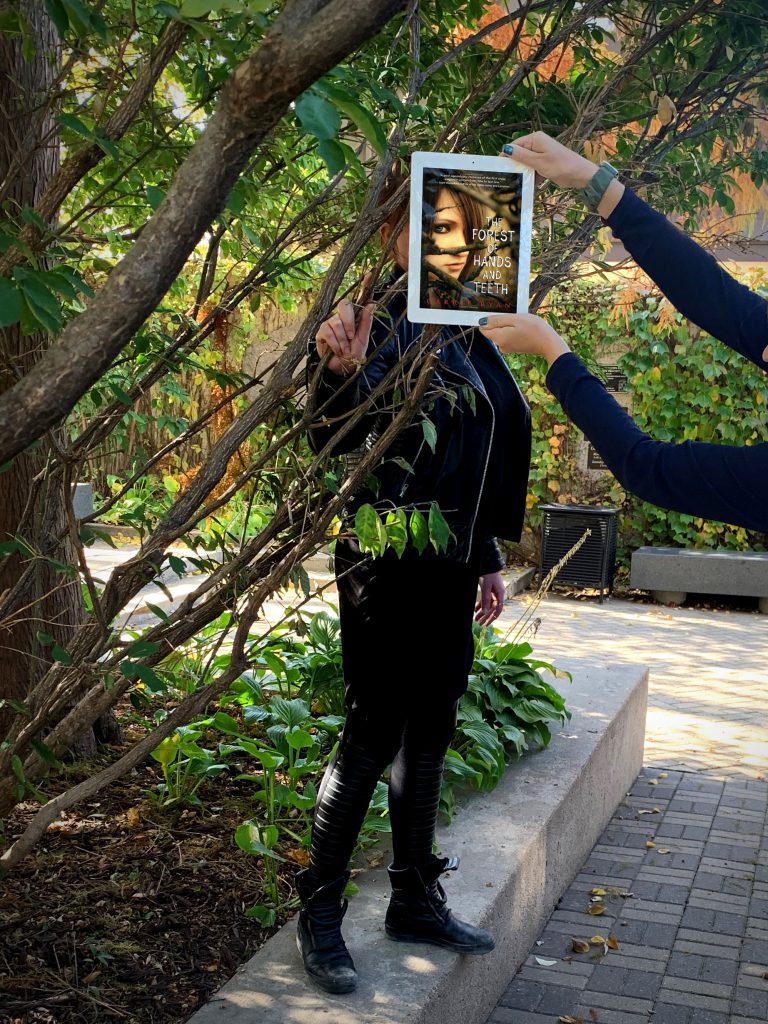
It’s November, which means it’s time for #NaNoWriMo, or National Novel Writing Month! This annual challenge to write 50,000 words of a novel has resulted in hundreds of thousands of new books since 1999, including this week’s #BookFaceFriday, “The Forest of Hands and Teeth” by Carrie Ryan (Random House Children’s Books, 2009). It’s available as both an eBook and audiobook in the Nebraska OverDrive Libraries. Find it and other November-written novels in the #NaNoWriMo collection. Plus new titles, both nonfiction and fiction, are added daily to Nebraska Overdrive Libraries!
““Mary’s observant, careful narration pulls readers into a bleak but gripping story of survival and the endless capacity of humanity to persevere . . .Fresh and riveting.””
―Publishers Weekly
Libraries participating in the Nebraska OverDrive Libraries Group currently have access to a shared and growing collection of digital downloadable audiobooks and eBooks. 186 libraries across the state share the Nebraska OverDrive collection of 26,554 audiobooks, 32,935 eBooks, and 3,940 magazines. As an added bonus it includes 130 podcasts that are always available with simultaneous use (SU), as well as SU ebooks and audiobook titles that publishers have made available for a limited time. If you’re a part of it, let your users know about this great title, and if you’re not a member yet, find more information about participating in Nebraska Overdrive Libraries!
Love this #BookFace & reading? Check out our past #BookFaceFriday photos on the Nebraska Library Commission’s Facebook page!
Posted in Books & Reading, General
Tagged #NaNoWriMo, Audiobook, bookface, bookfacefriday, Ebook, Nebraska OverDrive Libraries, Reading
Leave a comment
Friday Reads: The Road by Cormac McCarthy
“He thought the month was October but he wasnt sure. He hadnt kept a calendar for years …
He lowered the glasses and pulled down the cotton mask from his face.”
This is how Cormac McCarthy’s The Road begins.
It sounds familiar. It sounds relevant — timely; I was afraid, almost, that it would be too timely.
I’d read The Road before, years ago, and it easily became a favorite. Something about McCarthy’s prose is more akin to poetry, and that teetering, razor-edge brilliance of darkness not entirely lost to despair. This is a book whose memory of reading has haunted me through our own ever seeming dystopia; the world darkening through the corners like a vignette. And something beckoned me towards the book again; a glimmer of hope, survival.
This time, I chose the audiobook. Because this time, I was thinking about stories, and what will come next, and what came before: how stories were told without paper, how simple it seems to carry something that weighs nothing more than the air in your lungs. How stories might ask to be told again, in the future (a clock, time, is a great circle).
I’m a reluctant convert to audiobooks — my attention “span” is more of a blip these days, but I ended up listening while laying in bed, right before sleep. I’m sure this was partially responsible for some stressful dreams, but to be honest, they weren’t really any worse than normal.
The other trouble I have with audiobooks — the primary reason for my hesitation — is that I am so very picky about narrators. When I first played the recording of The Road, courtesy of my public library’s hoopla service, I almost backed out.
At first, hearing McCarthy’s words read instead of reading them was a jolt. McCarthy’s style is sparse — he eschews punctuation, dialogue tags, constructs sentences in short, sharp bursts. To hear it spoken out was so different than seeing it on the page; and yet, as I adjusted, listening ended up grounding the prose much more familiar terms. And, to be honest, it became enjoyable. When less engaged from the work of literature, I picked up on new dynamics of the story, new emotions; the narrator Tom Stechschulte, delineated the characters with excellent voices, and added a layer of closeness I don’t think I’d had to the story before. I’d originally enjoyed The Road because the language was gorgeous, and I like McCarthy’s style. I respected the human element, but I hadn’t connected to it. Having an actual person read the story — bring it to life, add dimension, did that for me in a way that hearing the story in the theater of my own mind wasn’t quite able to do. Near the midway point in the book, there’s a scene between the man and his wife — a terrible argument, about the horrors and reality of their future — that I felt was so well acted, and I was caught up in it, breathless.
The center of The Road is the man, and the boy — his son, his only son, and his legacy, and his only reason for living — unnamed and surviving the last gasps of a world ended on the road, trying to make it south, to the coast where the winter might be survived. On the surface, there’s really no reason to survive. Nothing is going to get better; in fact, in a world where cannibalism has become a fore-running dietary option, humanity made macabre ouroboros, it’s safe to say things are only going to get worse. Yet, call it foolish, call it stubbornness, call it humanity — the man and the boy keep going. Still they keep going, down the road.
I’ve always read that as the definition of hope, and now I’ve heard it, too.
McCarthy, Cormac. The Road. Narrated by Tom Stechschulte, Recorded Books, Inc., 2006. Audiobook.
#BookFaceFriday “The Book Woman of Troublesome Creek” by Kim Michele Richardson
Having fun isn’t hard when you’ve got a Library Card!
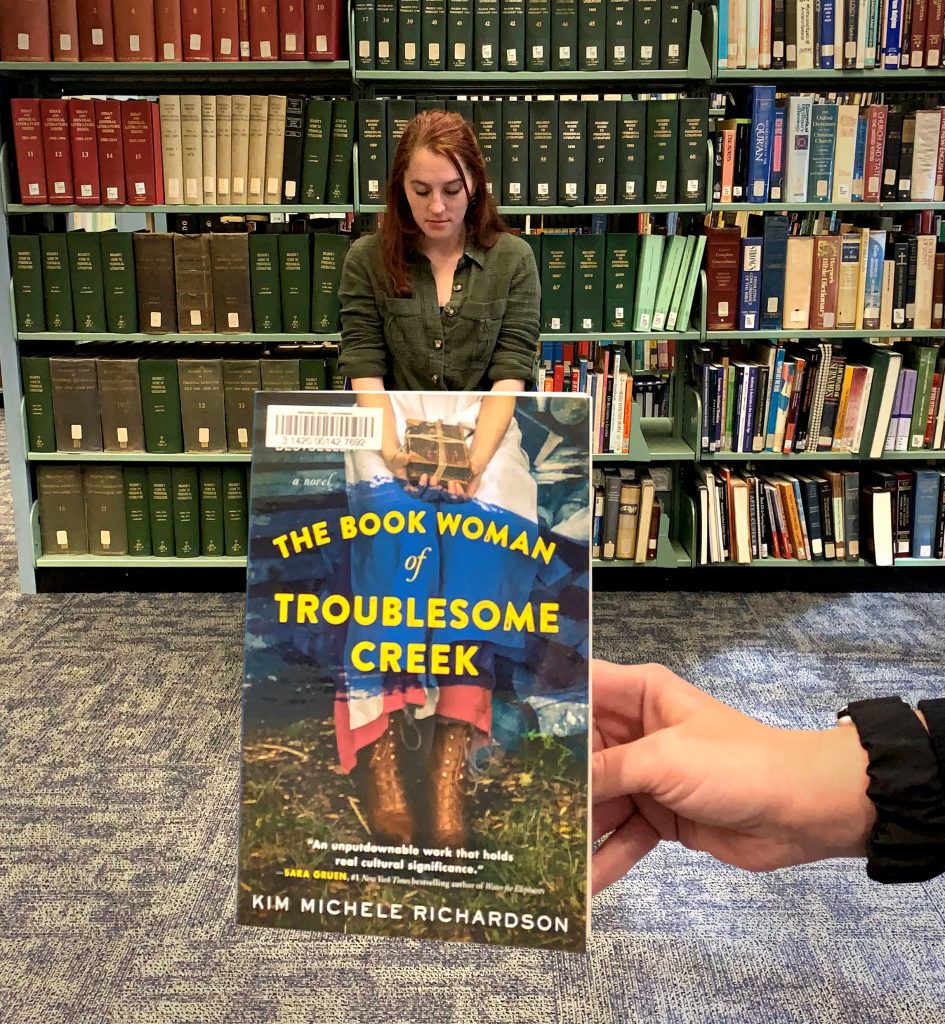
We are all about celebrating libraries and everything they can do for a community, but the first step in accessing all of their amazing services is getting yourself a library card. With that in mind, this #BookFaceFriday we wanted to help get the word out about September as National Library Card Sign-up Month! “The Book Woman of Troublesome Creek: A Novel” by Kim Michele Richardson (Sourcebooks Landmark, 2019) is available as an eBook and an Audiobook at Nebraska OverDrive Libraries in the Carpe Librum (Seize the Book) collection celebrating Library Card Sign-up Month. It’s an entire collection of stories about books, libraries, and librarians. “The Book Woman of Troublesome Creek” is also available as an NLC book club kit to any library or school book club!
“This gem of a historical from Richardson (The Sisters of Glass Ferry) features an indomitable heroine navigating a community steeped in racial intolerance. In 1936, 19-year-old Cussy Mary Carter works for the New Deal-funded Pack Horse Library Project, delivering reading material to the rural people of Kentucky…Readers will adore the memorable Cussy and appreciate Richardson’s fine rendering of rural Kentucky life.”
– Publishers Weekly
Find this title and many more through Nebraska OverDrive. 180 libraries across the state share the Nebraska OverDrive collection of 25,520 audiobooks, 32,303 eBooks, and 3,403 magazines. As an added bonus it includes 130 podcasts that are always available with simultaneous use (SU), as well as SU ebooks and audiobook titles that publishers have made available for a limited time. If you’re a part of it, let your users know about this great title, and if you’re not a member yet, find more information about participating in Nebraska Overdrive Libraries!
Love this #BookFace & reading? Check out our past #BookFaceFriday photos on the Nebraska Library Commission’s Facebook page!
Book Briefs: New University of Nebraska Press Books at the Nebraska Publications Clearinghouse
The Nebraska Publications Clearinghouse receives documents every month from all Nebraska state agencies, including the University of Nebraska Press (UNP). Each month we will be showcasing the UNP books that the Clearinghouse receives. UNP books, as well as all Nebraska state documents, are available for checkout by libraries and librarians for their patrons.
Here are the University of Nebraska Press books received in May and June 2021:
Abstract Design in American Quilts at 50 : 1971-2021
Edited by Marin F. Hanson ; Contributing authors: Jonathan Holstein, Carolyn Ducey, Sandra Sider, Jonathan Gregory, Nao Nomura, and Marin F. Hanson
Fifty years after its debut, the exhibition Abstract Design in American Quilts is remembered as a pivotal moment in the intersecting histories of art, craft, and design. Installed at New York’s Whitney Museum of American Art in 1971, the exhibition presented traditional American pieced quilts on walls more commonly used to display modern art such as abstract expressionist paintings. The exhibition, curated by Jonathan Holstein and Gail van der Hoof from their own collection, unexpectedly struck a chord with museumgoers and art critics alike, breaking attendance records and subsequently traveling to museums across the United States, Europe, and Japan.
With Abstract Design in American Quilts at 50, an exhibition series that includes an installation of the original quilt group, the International Quilt Museum at the University of Nebraska–Lincoln reexamines the half-century impact of this watershed exhibition. In five essays, leading quilt scholars assess the areas upon which the exhibition, in its various iterations, had its greatest impact, most notably the growth of quiltmaking across the United States and in art circles. The essays also discuss broader cultural phenomena that produced an environment in which quilts and other forms of material culture could be viewed and valued in new ways.
Black Snake : Standing Rock, the Dakota Access Pipeline, and Environmental Justice
By Katherine Wiltenburg Todrys
The controversial Dakota Access Pipeline (DAPL) made headlines around the world in 2016. Supporters called the pipeline key to safely transporting American oil from the Bakken oil fields of the northern plains to markets nationwide, essential to both national security and prosperity. Native activists named it the “black snake,” referring to an ancient prophecy about a terrible snake that would one day devour the earth. Activists rallied near the Standing Rock Reservation in North Dakota for months in opposition to DAPL, winning an unprecedented but temporary victory before the federal government ultimately permitted the pipeline. Oil began flowing on June 1, 2017.
The water protector camps drew global support and united more than three hundred tribes in perhaps the largest Native alliance in U.S. history. While it faced violent opposition, the peaceful movement against DAPL has become one of the most crucial human rights movements of our time.
Black Snake is the story of four leaders—LaDonna Allard, Jasilyn Charger, Lisa DeVille, and Kandi White—and their fight against the pipeline. It is the story of Native nations combating environmental injustice and longtime discrimination and rebuilding their communities. It is the story of a new generation of environmental activists, galvanized at Standing Rock, becoming the protectors of America’s natural resources.
California & Hawai’i Bound : U.S. Settler Colonialism and the Pacific West, 1848-1959
By Henry Knight Lozano ; Series: Studies in Pacific Worlds
Beginning in the era of Manifest Destiny, U.S. settlers, writers, politicians, and boosters worked to bind California and Hawai‘i together in the American imagination, emphasizing white settlement and capitalist enterprise. In California and Hawai‘i Bound Henry Knight Lozano explores how these settlers and boosters promoted and imagined California and Hawai‘i as connected places and sites for U.S. settler colonialism, and how this relationship reveals the fraught constructions of an Americanized Pacific West from the 1840s to the 1950s.
The growing ties of promotion and development between the two places also fostered the promotion of “perils” over this transpacific relationship, from Native Hawaiians who opposed U.S. settler colonialism to many West Coast Americans who articulated social and racial dangers from closer bonds with Hawai‘i, illustrating how U.S. promotional expansionism in the Pacific existed alongside defensive peril in the complicated visions of Americanization that linked California and Hawai‘i.
California and Hawai‘i Bound demonstrates how the settler colonial discourses of Americanization that connected California and Hawai‘i evolved and refracted alongside socioeconomic developments and native resistance, during a time when U.S. territorial expansion, transoceanic settlement and tourism, and capitalist investment reconstructed both the American West and the eastern Pacific.
Cattle Country : Livestock in the Cultural Imagination
By Kathryn Cornell Dolan ; Series: At Table
As beef and cattle production progressed in nineteenth-century America, the cow emerged as the nation’s representative food animal and earned a culturally prominent role in the literature of the day. In Cattle Country Kathryn Cornell Dolan examines the role cattle played in narratives throughout the century to show how the struggles within U.S. food culture mapped onto society’s broader struggles with colonization, environmentalism, U.S. identity, ethnicity, and industrialization.
Dolan examines diverse texts from Native American, African American, Mexican American, and white authors that showcase the zeitgeist of anxiety surrounding U.S. identity as cattle gradually became an industrialized food source, altering the country’s culture while exacting a high cost to humans, animals, and the land. From Henry David Thoreau’s descriptions of indigenous cuisines as a challenge to the rising monoculture, to Washington Irving’s travel narratives that foreshadow cattle replacing American bison in the West, to María Amparo Ruiz de Burton’s use of cattle to connect race and imperialism in her work, authors’ preoccupations with cattle underscored their concern for resource depletion, habitat destruction, and the wasteful overproduction of a single breed of livestock.
Cattle Country offers a window into the ways authors worked to negotiate the consequences of the development of this food culture and, by excavating the history of U.S. settler colonialism through the figure of cattle, sheds new ecocritical light on nineteenth-century literature.
Engendering Islands : Sexuality, Reproduction, and Violence in the Early French Caribbean
By Ashley M. Williard ; Series: Women and Gender in the Early Modern World
In seventeenth-century Antilles the violence of dispossession and enslavement was mapped onto men’s and women’s bodies, bolstered by resignified tropes of gender, repurposed concepts of disability, and emerging racial discourses. As colonials and ecclesiastics developed local practices and institutions—particularly family formation and military force—they consolidated old notions into new categories that affected all social groups.
In Engendering Islands Ashley M. Williard argues that early Caribbean reconstructions of masculinity and femininity sustained occupation, slavery, and nascent ideas of race. In the face of historical silences, Williard’s close readings of archival and narrative texts reveals the words, images, and perspectives that reflected and produced new ideas of human difference. Juridical, religious, and medical discourses expose the interdependence of multiple conditions—male and female, enslaved and free, Black and white, Indigenous and displaced, normative and disabled—in the islands claimed for the French Crown.
In recent years scholars have interrogated key aspects of Atlantic slavery, but none have systematically approached the archive of gender, particularly as it intersects with race and disability, in the seventeenth-century French Caribbean. The constructions of masculinity and femininity embedded in this early colonial context help elucidate attendant notions of otherness and the systems of oppression they sustained. Williard shows the ways gender contributed to and complicated emerging notions of racial difference that justified slavery and colonial domination, thus setting the stage for centuries of French imperialism.
Everybody’s Jonesin’ For Something
By Indigo Moor ; Series: The Backwaters Prize in Poetry Honorable Mention
Turning an unflinching spotlight on the American Dream, Indigo Moor plunges headfirst into national—and personal—laments and desires. From Emmett Till to the fall of the Twin Towers and through the wildfires of Paradise, California, Moor weaves a thread through the hopes, sacrifices, and Sisyphean yearnings that make this country the beautiful trap that it is. Everybody’s Jonesin’ for Something takes an imagistic leap through the darker side of our search for life, liberty, and the pursuit of happiness, perusing what we lose, what we leave behind, and what strange beauty we uncover.
French St. Louis : Landscape, Contexts, and Legacy
Edited by Jay Gitlin, Robert Michael Morrissey, and Peter J. Kastor ; Series: France Overseas: Studies in Empire and Decolonization
A gateway to the West and an outpost for eastern capital and culture, St. Louis straddled not only geographical and political divides but also cultural, racial, and sectional ones. At the same time, it connected a vast region as a gathering place of peoples, cultures, and goods. The essays in this collection contextualize St. Louis, exploring French-Native relations, the agency of empire in the Illinois Country, the role of women in “mapping” the French colonial world, fashion and identity, and commodities and exchange in St. Louis as part of a broader politics of consumption in colonial America. The collection also provides a comparative perspective on America’s two great Creole cities, St. Louis and New Orleans. Lastly, it looks at the Frenchness of St. Louis in the nineteenth century and the present.
French St. Louis recasts the history of St. Louis and reimagines regional development in the early American republic, shedding light on its francophone history.
The Greater Plains : Rethinking a Region’s Environmental Histories
Edited by Brian Frehner & Kathleen A Brosnan
The Greater Plains tells a new story of a region, stretching from the state of Texas to the province of Alberta, where the environments are as varied as the myriad ways people have inhabited them. These innovative essays document a complicated history of human interactions with a sometimes plentiful and sometimes foreboding landscape, from the Native Americans who first shaped the prairies with fire to twentieth-century oil regimes whose pipelines linked the region to the world.
The Greater Plains moves beyond the narrative of ecological desperation that too often defines the region in scholarly works and in popular imagination. Using the lenses of grasses, animals, water, and energy, the contributors reveal tales of human adaptation through technologies ranging from the travois to bookkeeping systems and hybrid wheat. Transnational in its focus and interdisciplinary in its scholarship, The Greater Plains brings together leading historians, geographers, anthropologists, and archaeologists to chronicle a past rich with paradoxical successes and failures, conflicts and cooperation, but also continual adaptation to the challenging and ever-shifting environmental conditions of the North American heartland.
Hostages of Empire : Colonial Prisoners of War in Vichy France
By Sarah Ann Frank ; Series: France Overseas: Studies in Empire and Decolonization
Hostages of Empire combines a social history of colonial prisoner-of-war experiences with a broader analysis of their role in Vichy’s political tensions with the country’s German occupiers. The colonial prisoners of war came from across the French Empire, they fought in the Battle for France in 1940, and they were captured by the German Army. Unlike their French counterparts, who were taken to Germany, the colonial POWs were interned in camps called Frontstalags throughout occupied France. This decision to keep colonial POWs in France defined not only their experience of captivity but also how the French and German authorities reacted to them.
Hostages of Empire examines how the entanglement of French national pride after the 1940 defeat and the need for increased imperial control shaped the experiences of 85,000 soldiers in German captivity. Sarah Ann Frank analyzes the nature of Vichy’s imperial commitments and collaboration with its German occupiers and argues that the Vichy regime actively improved conditions of captivity for colonial prisoners in an attempt to secure their present and future loyalty. This French “magnanimity” toward the colonial prisoners was part of a broader framework of racial difference and hierarchy. As such, the relatively dignified treatment of colonial prisoners must be viewed as a paradox in light of Vichy and Free French racism in the colonies and the Vichy regime’s complicity in the Holocaust. Hostages of Empire seeks to reconcile two previously rather distinct histories: that of metropolitan France and that of the French colonies during World War II.
Indian Soldiers in World War I : Race and Representation in an Imperial War
By Andrew T. Jarboe ; Series: Studies in War, Society, and the Military
More than one million Indian soldiers were deployed during World War I, serving in the Indian Army as part of Britain’s imperial war effort. These men fought in France and Belgium, Egypt and East Africa, and Gallipoli, Palestine, and Mesopotamia.
In Indian Soldiers in World War I Andrew T. Jarboe follows these Indian soldiers—or sepoys—across the battlefields, examining the contested representations British and Indian audiences drew from the soldiers’ wartime experiences and the impacts these representations had on the British Empire’s racial politics. Presenting overlooked or forgotten connections, Jarboe argues that Indian soldiers’ presence on battlefields across three continents contributed decisively to the British Empire’s final victory in the war. While the war and Indian soldiers’ involvement led to a hardening of the British Empire’s prewar racist ideologies and governing policies, the battlefield contributions of Indian soldiers fueled Indian national aspirations and calls for racial equality. When Indian soldiers participated in the brutal suppression of anti-government demonstrations in India at war’s end, they set the stage for the eventual end of British rule in South Asia.
Indigenous Languages and the Promise of Archives
Edited by Adrianna Link, Abigail Shelton, and Patrick Spero ; Series: New Visions in Native American and Indigenous Studies
Indigenous Languages and the Promise of Archives captures the energy and optimism that many feel about the future of community-based scholarship, which involves the collaboration of archives, scholars, and Native American communities. The American Philosophical Society is exploring new applications of materials in its library to partner on collaborative projects that assist the cultural and linguistic revitalization movements within Native communities. A paradigm shift is driving researchers to reckon with questionable practices used by scholars and libraries in the past to pursue documents relating to Native Americans, practices that are often embedded in the content of the collections themselves.
The Center for Native American and Indigenous Research at the American Philosophical Society brought together this volume of historical and contemporary case studies highlighting the importance of archival materials for the revitalization of Indigenous languages. Essays written by archivists, historians, anthropologists, knowledge-keepers, and museum professionals, cover topics critical to language revitalization work; they tackle long-standing debates about ownership, access, and control of Indigenous materials stored in repositories; and they suggest strategies for how to decolonize collections in the service of community-based priorities. Together these essays reveal the power of collaboration for breathing new life into historical documents.
The JPS Jewish Heritage Torah Commentary
By Rabbi Eli L. Garfinkel ; Series: JPS Study Bible
The JPS Jewish Heritage Torah Commentary shows Jews of all ages and backgrounds that the Jewish people’s most significant book is not dusty and irrelevant but an eternally sacred text wholly pertinent to our modern lives. Designed to keep the attention of all readers, each lively essay is both brief enough to be read in minutes and deep and substantive enough to deliver abundant food for thought.
Its cornerstone is its unique four-part meditation on the Jewish heritage. After briefly summarizing a Torah portion, the commentary orbits that portion through four central pillars of Jewish life—the Torah (Torat Yisrael), the land of Israel (Eretz Yisrael), the Jewish people (Am Yisrael), and Jewish thought (Mahshevet Yisrael)—illuminating how the four intersect and enrich one another. Furthering the Jewish thought motif, every essay ends with two questions for thought well suited for discussion settings. Each commentary can be used as the launchpad for a lesson, a sermon, a d’var Torah, or a discussion.
Readers from beginners to experts will come away with new understandings of our Jewish heritage—and be inspired to draw closer to its four dimensions.
Maestro : André Tchelistcheff and the Rebirth of Napa Valley
By James O. Gump ; Series: At Table
Wine insiders called André Tchelistcheff the “winemaker’s winemaker,” the “wine doctor,” and simply “maestro.” After Prohibition brought Napa Valley and its wine industry to the brink of catastrophe, Tchelistcheff (1901–94) proved essential in its revitalization.
Tchelistcheff’s unique background—a sickly child, a Russian émigré forced from his homeland during the Bolshevik Revolution, a White Army lieutenant who fought in the Crimea, a physical laborer in a Bulgarian coal mine, a Czechoslovakian-trained agronomist, and a French-schooled viticulturist and enologist—prepared him for a remarkable winemaking career. He spent thirty-five years in Napa Valley’s Beaulieu Vineyard and nearly two “post-retirement” decades doing freelance consulting work for more than thirty wineries.
His early struggles forged his principal character traits, which he passed on to an entire generation of winemakers. His students, including some of the most accomplished winemakers of the post-Prohibition period, marveled over their mentor’s sense of authority, profound insight, humble presence, and abundant wisdom.
This inspiring account of Tchelistcheff’s life includes interviews with friends, family, and mentees, which reveal how one man used his passion and knowledge to help save a community on the edge of disaster. In Maestro James O. Gump preserves the memory of a fascinating individual and one of the most influential winemakers of the modern era.
The Melancholy Void : Lyric and Masculinity in the Age of Góngora
By Felipe Valencia ; Series: New Hispanisms
At the turn of the seventeenth century, Spanish lyric underwent a notable development. Several Spanish poets reinvented lyric as a melancholy and masculinist discourse that sang of and perpetrated symbolic violence against the female beloved. This shift emerged in response to the rising prestige and commercial success of the epic and was enabled by the rich discourse on the link between melancholy and creativity in men.
In The Melancholy Void Felipe Valencia examines this reconstruction of the lyric in key texts of Spanish poetry from 1580 to 1620. Through a study of canonical and influential texts, such as the major poems by Luis de Góngora and the epic of Alonso de Ercilla, but also lesser-known texts, such as the lyrics by Miguel de Cervantes, The Melancholy Void addresses four understudied problems in the scholarship of early modern Spanish poetry: the use of gender violence in love poetry as a way to construct the masculinity of the poetic speaker; the exploration in Spanish poetry of the link between melancholy and male creativity; the impact of epic on Spanish lyric; and the Spanish contribution to the fledgling theory of the lyric.
The Melancholy Void brings poetry and lyric theory to the conversation in full force and develops a distinct argument about the integral role of gender violence in a prominent strand of early modern Spanish lyric that ran from Garcilaso to Góngora and beyond.
More in Time : A Tribute to Ted Kooser
Edited by Jessica Poli, Marco Abel, and Timothy Schaffert
More in Time is a celebration and tribute to Ted Kooser, two-time U.S. Poet Laureate, winner of the Pulitzer Prize for Poetry, and Presidential Professor of the University of Nebraska. Through personal reflections, essays, and creative works both inspired by and dedicated to Kooser, this collection shines a light on the many ways the midwestern poet has affected others as a teacher, mentor, colleague, and friend, as well as a fellow writer and observer-of-the-world. The creative responses included in this volume are reflective of the impact Kooser has had in his connections to other writers, while also revealing glimpses of his distinct way of seeing.
The New White Race : Settler Colonialism and the Press in French Algeria, 1860-1914
By Charlotte Ann Legg ; Series: France Overseas: Studies in Empire and Decolonization
The New White Race traces the development of the press in Algeria between 1860 and 1914, examining the particular role of journalists in shaping the power dynamics of settler colonialism. Constrained in different ways by the limitations imposed on free expression in a colonial context, diverse groups of European settlers, Algerian Muslims, and Algerian Jews nevertheless turned to the press to articulate their hopes and fears for the future of the land they inhabited and to imagine forms of community which would continue to influence political debates until the Algerian War. The frontiers of these imagined communities did not necessarily correlate with those of the nation—either French or Algerian—but framed processes of identification that were at once local, national, and transnational.
The New White Race explores these processes of cultural and political identification, highlighting the production practices, professional networks, and strategic-linguistic choices mobilized by journalists as they sought to influence the sentiments of their readers and the decisions of the French state. Announcing the creation of a “new white race” among the mixed European population of Algeria, settler journalists hoped to increase the autonomy of the settler colony without forgoing the protections afforded by their French rulers. Their ambivalent expressions of “French” belonging, however, reflected tensions among the colonizers; these tensions were ably exploited by those who sought to transform or contest French imperial rule.
Not a Big Deal : Narrating to Unsettle
By Paul Ardoin ; Series: Frontiers of Narrative
Not a Big Deal asks how texts might work to unsettle readers at a moment when unwelcome information is rejected as fake news or rebutted with alternative facts. When readers already recognize “defamiliarizing texts” as a category, how might texts still work toward the goals of defamiliarization? When readers refuse to grapple with texts that might shock them or disrupt their extant views about politics, race, or even narrative itself, how can texts elicit real engagement?
This study draws from philosophy, narratology, social neuroscience, critical theory, and numerous other disciplines to read texts ranging from novels and short stories to graphic novels, films, and fiction broadcasted and podcasted—all of which enact curious strategies of disruption while insisting that they do no such thing.
Following a model traceable to Toni Morrison’s criticism and short fiction, texts by Kyle Baker, Scott Brown, Percival Everett, Daniel Handler, David Robert Mitchell, Jordan Peele, and Colson Whitehead suggest new strategies for unsettling the category-based perceptions behind what Everett calls “the insidious colonialist reader’s eye which infects America.” Not a Big Deal examines problems in our perception of the world and of texts and insists we do the same.
On the Sidelines : Gendered Neoliberalism and the American Female Sportscaster
By Guy Harrison ; Series: Sports, Media, and Society
When sports fans turn on the television or radio today, they undoubtedly find more women on the air than ever before. Nevertheless, women sportscasters are still subjected to gendered and racialized mistreatment in the workplace and online and are largely confined to anchor and sideline reporter positions in coverage of high-profile men’s sports. In On the Sidelines Guy Harrison weaves in-depth interviews with women sportscasters, focus groups with sports fans, and a collection of media products to argue that gendered neoliberalism—a cluster of exclusionary twenty-first-century feminisms—maintains this status quo.
Spinning a cohesive narrative, Harrison shows how sportscasting’s dependence on gendered neoliberalism broadly places the onus on women for their own success despite systemic sexism and racism. As a result, women in the industry are left to their own devices to navigate double standards, bias in hiring and development for certain on-air positions, harassment, and emotional labor. Through the lens of gendered neoliberalism, On the Sidelines examines each of these challenges and analyzes how they have been reshaped and maintained to construct a narrow portrait of the ideal neoliberal female sportscaster. Consequently, these challenges are taken for granted as “natural,” sustaining women’s marginalization in the sportscasting industry.
Pseudo-Memoirs : Life and Its Imitation in Modern Fiction
By Rochelle Tobias ; Series: Frontiers of Narrative
Pseudo-Memoirs redefines the notion of fiction itself, a form that has all too often been understood in terms of its capacity to produce a seeming reality. Rochelle Tobias argues that the verisimilitude of the novel derives not from its object but from the subjectivity at its base. What generates the plausibility of fiction is not the referentiality of its depictions but the intentionality of consciousness.
Edmund Husserl developed the idea that consciousness is always intentional in the sense that it is directed outside itself toward something that it does not find so much as it constitutes as an object. Pseudo-memoirs reveal the full implications of this position in their double structure as the tale of their own telling or the fiction of life-writing. In so doing they reveal how the world of fiction is constructed, but more important they bring to the fore the idealist premises that fuel the novel and guarantee its truth, even when it remains an invention of the imagination.
Rochelle Tobias explores novels by Thomas Mann, Robert Walser, Thomas Bernhard, and W. G. Sebald in conjunction with philosophical and theoretical texts by René Descartes, Husserl, Friedrich Nietzsche, György Łukács, Roland Barthes, and Maurice Blanchot.
Tenacious of Life : The Quadruped Essays of John James Audubon and John Bachman
By John James Audubon and John Bachman, Edited and with original commentary by Daniel Patterson and Eric Russell
Daniel Patterson and Eric Russell present a groundbreaking case for considering John James Audubon’s and John Bachman’s quadruped essays as worthy of literary analysis and redefine the role of Bachman, the perpetually overlooked coauthor of the essays. After completing The Birds of America (1826–38), Audubon began developing his work on the mammals. The Viviparous Quadrupeds of North America volumes show an antebellum view of nature as fundamentally dynamic and simultaneously grotesque and awe-inspiring. The quadruped essays are rich with good stories about these mammals and the humans who observe, pursue, and admire them.
For help with the science and the essays, Audubon enlisted the Reverend John Bachman of Charleston, South Carolina. While he has been acknowledged as coauthor of the essays, Bachman has received little attention as an American nature writer. While almost all works that describe the history of American nature writing include Audubon, Bachman shows up only in a subordinate clause or two. Tenacious of Life strives to restore Bachman’s status as an important American nature writer.
Patterson and Russell analyze the coauthorial dance between the voices of Audubon, an experienced naturalist telling adventurous hunting stories tinged often by sentiment, romanticism, and bombast, and of Bachman, the courteous gentleman naturalist, scientific detective, moralist, sometimes cruel experimenter, and humorist. Drawing on all the primary and secondary evidence, Patterson and Russell tell the story of the coauthors’ fascinating, conflicted relationship. This collection offers windows onto the early United States and much forgotten lore, often in the form of travel writing, natural history, and unique anecdotes, all told in the compelling voices of Antebellum America’s two leading naturalists.
Thinking About Good and Evil : Jewish Views from Antiquity to Modernity
By Rabbi Wayne Allen ; Series: JPS Essential Judaism
The most comprehensive book on the topic, Thinking about Good and Evil traces the most salient Jewish ideas about why innocent people seem to suffer, why evil individuals seem to prosper, and God’s role in such matters of (in)justice, from antiquity to the present.
Starting with the Bible and Apocrypha, Rabbi Wayne Allen takes us through the Talmud; medieval Jewish philosophers and Jewish mystical sources; the Ba’al Shem Tov and his disciples; early modern thinkers such as Spinoza, Mendelssohn, and Luzzatto; and, finally, modern thinkers such as Cohen, Buber, Kaplan, and Plaskow. Each chapter analyzes individual thinkers’ arguments and synthesizes their collective ideas on the nature of good and evil and questions of justice. Allen also exposes vastly divergent Jewish thinking about the Holocaust: traditionalist (e.g., Ehrenreich), revisionist (e.g., Rubenstein, Jonas), and deflective (e.g., Soloveitchik, Wiesel).
Rabbi Allen’s engaging, accessible volume illuminates well-known, obscure, and novel Jewish solutions to the problem of good and evil.
Transmovimientos : Latinx Queer Migrations, Bodies, and Spaces
Edited by Ellie D. Hernández, Eddy Francisco Alvarez Jr., and Magda García
Within a trans-embodied framework, this anthology identifies transmovimientos as the creative force or social mechanism through which queer, trans, and gender nonconforming Latinx communities navigate their location and calibrate their consciousness. This anthology unveils a critical perspective with the emphasis on queer, trans, and gender nonconforming communities of immigrants and social dissidents who reflect on and write about diaspora and migratory movements while navigating geographical and embodied spaces across gendered and racialized contexts, all crucial elements of the trans-movements taking place in the United States.
This collection forms a nuanced conversation between scholarship and social activism that speaks in concrete ways about diasporic and migratory LGBTQ communities who suffer from immoral immigration policies and political discourses that produce untenable living situations. The focal point of analysis throughout Transmovimientos examines migratory movements and anti-immigrant sentiment, homophobia, and stigma toward people who are transgender, immigrants, and refugees. These deliberate consciousness-based expressions are designed to realign awareness about the body in transit and the diasporic experience of relocating and emerging into new possibilities.
Unholy Heart : New and Selected Poems
By Grace Bauer
Unholy Heart includes generous selections from each of Grace Bauer’s previous books of poetry, plus a sampling of new poems. Bauer has long been known for the wide range of both her subject matter and poetic styles, from the biblical persona poems of The Women at the Well, to the explorations of visual art in Beholding Eye, to the intersections of personal history and pop culture in Retreats and Recognitions and Nowhere All At Once, and to the postmodern fragmentations in MEAN/TIME. Along with these selections, Bauer incorporates her most elegiac work yet.
A Warning for Fair Women : Adultery and Murder in Shakespeare’s Theater
Edited by Ann C. Christensen ; Series: Early Modern Cultural Studies
A Warning for Fair Women is a 1599 true-crime drama from the repertory of Shakespeare’s acting company. While important to literary scholars and theater historians, it is also readable, relevant, and stage-worthy today. Dramatizing the murder of London merchant George Saunders by his wife’s lover, and the trials and executions of the murderer and accomplices, it also sheds light on neighborhood and domestic life and crime and punishment.
This edition of A Warning for Fair Women is fully updated, featuring a lively and extensive introduction and covering topics from authorship and staging to the 2018 world revival of the play in the United States. It includes a section with discussion and research questions along with resources on topics raised by the play, from beauty and women’s friendship to the occult. Ann C. Christensen presents a freshly edited text for today’s readers, with in-depth explanatory notes, scene summaries, a gallery of period images, and full scholarly apparatus.
Willa Cather’s Pittsburgh
Edited by Timothy W. Bintrim, James A. Jaap, and Kimberly Vanderlaan ; Series: Volume 13, Cather Studies
Willa Cather wrote about the places she knew, including Nebraska, New Mexico, New York, and Virginia. Often forgotten among these essential locations has been Pittsburgh. During the ten years Pittsburgh was her home (1896–1906), Cather worked as an editor, journalist, teacher, and freelance writer. She mixed with all sorts of people and formed friendships both ephemeral and lasting. She published extensively—and not just profiles and reviews but also a collection of poetry, April Twilights, and more than thirty short stories, including several collected in The Troll Garden that are now considered masterpieces: “A Death in the Desert,” “The Sculptor’s Funeral,” “A Wagner Matinee,” and “Paul’s Case.” During extended working vacations through 1916, she finished four novels in Pittsburgh.
Writing Anthropologists, Sounding Primitives : The Poetry & Scholarship of Edward Sapir, Margaret Mead & Ruth Benedict
By A. Elisabeth Reichel : Critical Studies in the History of Anthropology
Writing Anthropologists, Sounding Primitives re-examines the poetry and scholarship of three of the foremost figures in the twentieth-century history of U.S.-American anthropology: Edward Sapir, Margaret Mead, and Ruth Benedict. While they are widely renowned for their contributions to Franz Boas’s early twentieth-century school of cultural relativism, what is far less known is their shared interest in probing the representational potential of different media and forms of writing. This dimension of their work is manifest in Sapir’s critical writing on music and literature and Mead’s groundbreaking work with photography and film. Sapir, Mead, and Benedict together also wrote more than one thousand poems, which in turn negotiate their own media status and rivalry with other forms of representation.
A. Elisabeth Reichel presents the first sustained study of the published and unpublished poetry of Sapir, Mead, and Benedict, charting this largely unexplored body of work and relevant selections of the writers’ scholarship. In addition to its expansion of early twentieth-century literary canons, Writing Anthropologists, Sounding Primitives contributes to current debates about the relations between different media, sign systems, and modes of sense perception in literature and other media. Reichel offers a unique contribution to the history of anthropology by synthesizing and applying insights from the history of writing, sound studies, and intermediality studies to poetry and scholarship produced by noted early twentieth-century U.S.-American cultural anthropologists.
Friday Reads: The Long Way To A Small, Angry Planet by Becky Chambers
Science fiction titles have been popping up more and more in my reading list over this past year, perhaps as an escape from our current reality. A list of the some of the best new science fiction from the last 15 years led me to some fantastic escapes, including:
- Station Eleven by Emily St. John Mandel (2014)
- Lagoon by Nnedi Okorafor (2014)
- The Lesson by Cadwell Turnbull (2019)
- The Three-Body Problem by Cixin Liu (2014)
- The Long Way to a Small, Angry Planet by Becky Chambers (2014)
The last one on that list, The Long Way to a Small, Angry Planet by Becky Chambers is the first in the Wayfarers trilogy. Described as a “light-hearted space opera”, the story follows a ragtag group of wormhole tunnelers as they cruise through space. New ship accountant Rosemary is adjusting to life off-planet and to her new crew mates. But when the team is offered the tunneling job of a lifetime, Rosemary must decide if she can trust them with a secret about her past.
I don’t often associate “cozy” with “sci-fi” but this is an apt descriptor of this novel. Quirky, likeable characters and a heartwarming tone would make this a perfect read for fans of The Hitchhiker’s Guide to the Galaxy.
Chambers, Becky. The Long Way to a Small, Angry Planet. New York: Harper Voyager 2016. (Originally self-published, 2014).
Posted in Books & Reading
Tagged Becky Chambers, Book Review, Friday Reads, Science Fiction, scifi
Leave a comment
#BookFaceFriday – “Maria Czaplicka: Gender, Shamanism, Race” by Grażyna Kubica
We tip our hat to this week’s #BookFaceFriday.
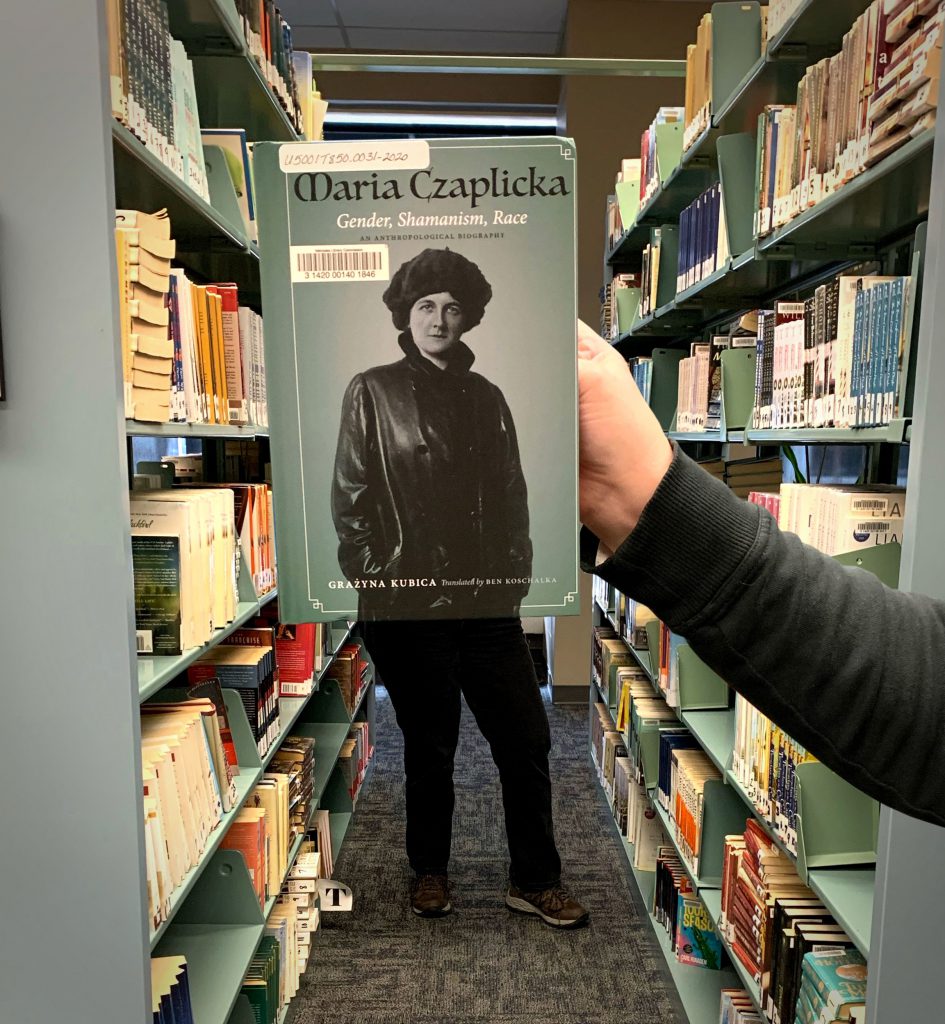
If expanding your worldview or knowledge through reading was on your list of New Year’s goals, check out “Maria Czaplicka: Gender, Shamanism, Race (Critical Studies in the History of Anthropology)” written by Grażyna Kubica, translated by Ben Koschalka (University of Nebraska Press; Illustrated Edition, 2020.) The Nebraska Library Commission’s Collection is always growing, the Nebraska Publications Clearinghouse receives documents every month from all Nebraska state agencies, including the University of Nebraska Press (UNP). UNP books, as well as all Nebraska state documents, are available for checkout by libraries and librarians for their patrons.
“Grazyna Kubica examines Maria Czaplicka’s unfinished scientific legacy in this page-turner history of anthropology during wartime Britain. One review of Czaplicka’s account of her 1915 Siberian expedition proclaimed that she ‘could not be dull if she tried.’ Kubica offers a full and fitting tribute to Czaplicka’s indomitable spirit, her contributions to continuing debates, and the meaning of a truncated life in anthropology.”—Sally Cole, professor of sociology and anthropology at Concordia College and author of Ruth Landes: A Life in Anthropology
This week’s #BookFace model is Mary Sauers, NLC’s Government Information Services Librarian. Mary writes the monthly Book Briefs blog post showcasing the latest UNP books that the Clearinghouse has received.
Love this #BookFace & reading? Check out our past #BookFaceFriday photos on the Nebraska Library Commission’s Facebook page!
Friday Reads: Eat the Buddha: Life and Death in a Tibetan Town, by Barbara Demick

Barbara Demick’s 2009 book, Nothing to Envy: Ordinary Lives in North Korea, blew me away with the eye-opening window it provided into everyday life in North Korea. In Eat the Buddha: Life and Death in a Tibetan Town, published this past July, Demick offers similar insight into Tibet by profiling a handful of individuals whose lived experiences paint a representative picture of life in a little-known land.
I’m guessing I’m not alone in my limited knowledge of Tibet. I associate it with the Dalai Lama, living in exile in India; Mount Everest, located on the border between Nepal and Tibet; and conflicts with the Chinese government, which claims sovereignty over it. After reading Demick’s book, I’ve definitely expanded my knowledge of the issues Tibetans have faced, particularly since 1950 when the Chinese army “liberated” them on behalf of Mao Zedong’s Communist Party.
Demick’s subjects tell tales of property seizure and struggle sessions. They also suffered from famine–a result of collectivization coordinated by cadres who ignored the delicate balance Tibetans had previously maintained between herding and high-altitude farming. Perhaps the biggest affront, however, was the Chinese government’s effort to suppress Tibetan’s religion, culture, and language through attacks on monks, monasteries, and the Dalai Lama:
Seeing the monks humiliated, statues smashed, and paintings burned shook Tibetans to the core. Buddhism provided the rituals through which the seasons were measured, births celebrated, and deaths grieved. . . . The attacks on religion alienated Tibetans who might otherwise have supported the Communist Party’s efforts to stamp out feudalism and create social equality. (48)
Not surprisingly, monasteries have become primary sites of contemporary Tibetan resistance. Initially demolished or repurposed in the late 1950s, monasteries started reopening in 1980. By 1994, however, the Communist Party had started cracking down on them again to “rein in Tibetan religious life” (144). Since then conflicts have escalated until, in 2009, a young monk set himself on fire, triggering a wave of self-immolations over subsequent years. (The 156th occurred on November 26, 2019.)
Due to the shocking nature of this means of political protest, self-immolations have received international media coverage. If you are like me, this may be the primary reason you have even the slightest inkling of what’s been happening in Tibet. If you’d like to learn more, however, you now have a book recommendation: Barbara Demick’s Eat the Buddha!
Demick, Barbara. Eat the Buddha: Life and Death in a Tibetan Town. New York: Random House, 2020.
#BookFaceFriday – “No Truth Without Ruth”
Dissent is patriotic, and so is this #BookFaceFriday.
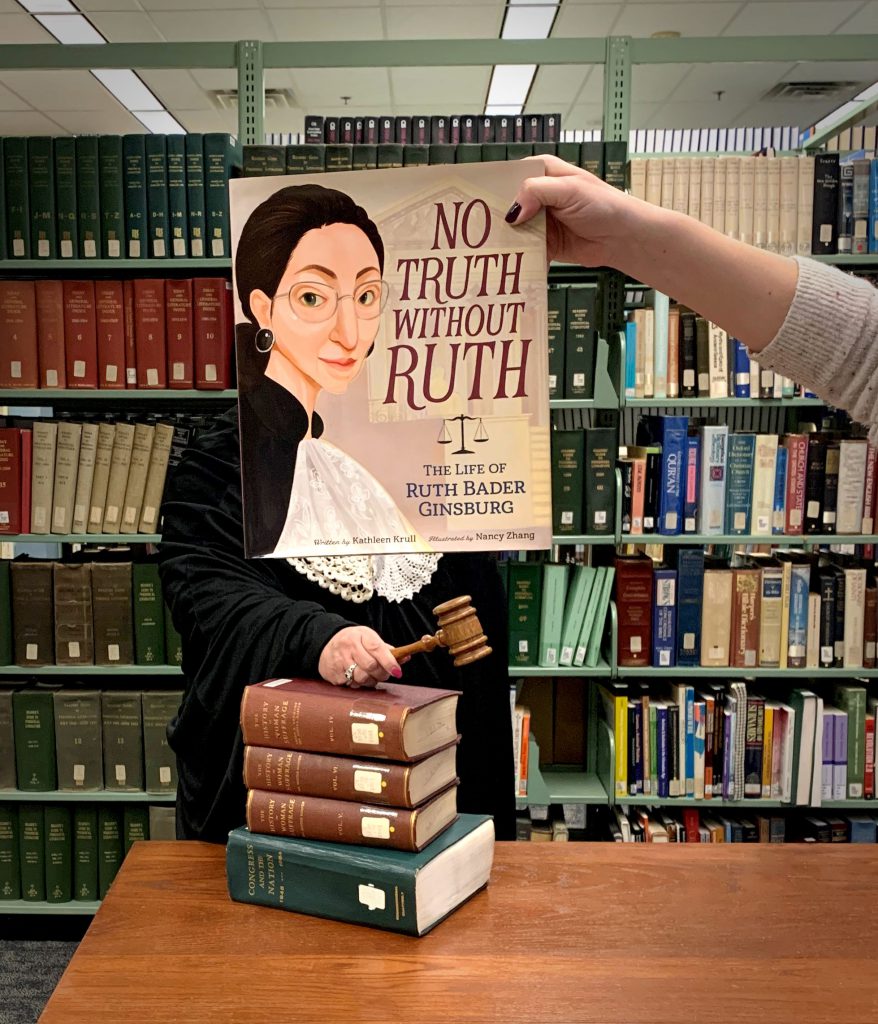
In honor of the notorious R.B.G. we wanted to highlight this throwback #BookFace. May your storytimes be filled with heroes that inspire us as much as Ruth Bader Ginsburg. Check out “No Truth Without Ruth: The Life of Ruth Bader Ginsburg” written by Kathleen Krull and illustrated by Nancy Zhang (Quill Tree Books, 2018.) This title comes from our large collection of children’s and young adult books sent to us as review copies from book publishers. When our Children and Young Adult Library Services Coordinator, Sally Snyder, is done with them, the review copies are available for the Library System Directors to distribute to school and public libraries in their systems. Public and school library staff are also welcome to stop by and select some titles for their library collections. We think this one would be a great addition to any library. Contact Sally Snyder for more information.
“Large, colorful illustrations complement and highlight the text. Zhang captures the look and style of each era in Ginsburg’s life. Employing a strongly admiring tone and accessible language, the author emphasizes Ginsburg’s struggles, strengths, and triumphs. Informative, well-told biography.” (Kirkus Reviews)
More R.B.G. Children’s Books:
- A Is for Awesome: 23 Iconic Women Who Changed the World, by Eva Chen
- I Look Up to Ruth Bader Ginsburg, by Anna Membrino
- My Little Golden Book About Ruth Bader Ginsburg, by Shana Corey
- When Ruth Bader Ginsburg Chewed 100 Sticks of Gum, by Mark Andrew Weakland
- Ruth Bader Ginsburg: The Case of R.B.G. vs. Inequality, by Jonah Winter
- I Dissent: Ruth Bader Ginsburg Makes Her Mark, by Debbie Levy
- Who Is Ruth Bader Ginsburg, by Patricia Brennan Demuth
- Notorious RBG: The Life & Times of Ruth Bader Ginsburg, Young Readers Edition, by Irin Carmon & Shana Knizhnick
This week’s #BookFace model is Mary Geibel, our Information Services Technician!
Love this #BookFace & reading? We suggest checking out all the titles available in our Book Club collection, permanent collection, and Nebraska OverDrive Libraries. Check out our past #BookFaceFriday photos on the Nebraska Library Commission’s Facebook page!
Posted in Books & Reading
Tagged Book Covers, bookface, bookfacefriday, Ruth Bader Ginsburg
Leave a comment
#BookFaceFriday “The Bookshop at Water’s End” by Patti Callahan Henry
Take a dip with #BookFaceFriday!
Life’s a balancing act just like this week’s #BookFace. Check out “The Bookshop at Water’s End: A Novel” by Patti Callahan Henry (Penguin Publishing Group, 2017) it’s available to all Nebraska OverDrive Libraries in eBook format. 173 libraries across the state share this collection of 17,165 audiobooks and 28,972 eBooks. As an added bonus it includes 130 podcasts that are always available with simultaneous use (SU), as well as SU ebooks and audiobook titles that publishers have made available for a limited time due to the pandemic or Black Lives Matter.
If you’re a part of it, let your users know about this great title, and if you’re not a member yet, find more information about participating in Nebraska Overdrive Libraries!
“The Bookshop at Water’s End carries us along the graceful curves and outwardly serene story line of two childhood friends returning to their summer riverside home. But like the river she writes about, Patti’s plot roils with strong undercurrents of murky secrets, tragedy and the pulsing tides of self-discovery. No one writes about the power of family and friends like Patti Callahan Henry. The Bookshop at Water’s End is a must-read for your summer!”—Mary Alice Monroe, New York Times bestselling author of Beach House for Rent
Love this #BookFace & reading? Check out our past #BookFaceFriday photos on the Nebraska Library Commission’s Facebook page!
Posted in Books & Reading, General
Tagged Book Art, Book Covers, bookface, bookfacefriday, Ebook, OverDrive, Patti Callahan Henry, Reading
Leave a comment
